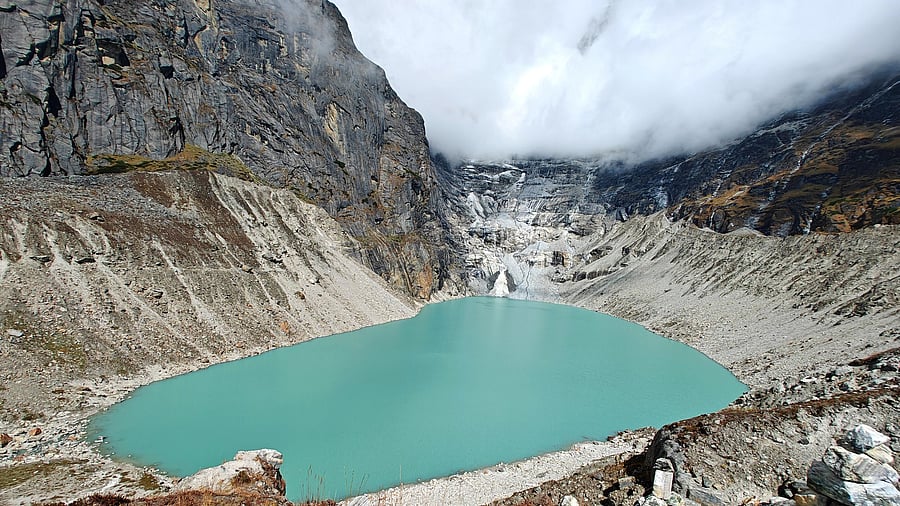
A turquoise glacial lake nestled in the Himalayan mountains.
Credit: iStock Photo
New Delhi: Indian scientists have identified 50 glacial lakes in the Himalayas as “very highly hazardous” with the potential to trigger massive glacial lake outburst floods like what happened at Kedarnath in 2013 or in Sikkim last year while another 324 such lakes have been categorised as “highly hazardous”:
Gurudongmar – a tourist attraction - and South Lhonak in Sikkim, Samadar Tapu in Himachal Pradesh and a few lakes in Ladakh are among those water bodies ranked high to very high hazard potential.
Researchers at Indian Institute Technology, Ropar identified 851 glacial lakes directly connected to the parent glacier, of which over 550 pose moderate (198) to high (324) to very high (50) risks. They are spread over 232 sq km of area.
The lakes are in India as well as in other Himalayan countries like China (Tibet autonomous region), Bhutan and Nepal.
In high mountain regions, glacial lake outburst floods (GLOFs) that heavily inundate the downstream areas have emerged as a major cause of concern in the past decade, particularly because of rising temperatures and de-glaciation.
Increasing population and socioeconomic development activities have further destabilized these fragile mountain environments, increasing their vulnerability to GLOF events and leading to severe damage like the Chorabari lake outburst in 2013 or the flood triggered by South Lhonak lake last year.
To determine such lakes’ vulnerability, the trio of Reet Kamal Tiwari, Ankit Tyagi and Deepali Gaikwad examined their topographic features against 12 criteria that they picked up from the most frequented triggers of the past such floods.
A country-wise analysis revealed that a significant number of high-hazard lakes were in India (100 lakes), followed by Nepal (52) and Bhutan (50), they reported.
Lakes classified as 'very high hazard' generally have the largest lake and glacier areas.
“A significant number of high-risk lakes were located in the central Himalayas (151 lakes), followed by the eastern (148) and western regions (70), they reported in the journal Remote Sensing Applications: Society and Environment.
State-wise, Jammu & Kashmir and Ladakh have the highest number of lakes (62), followed by Sikkim (17) and Arunachal Pradesh (12), according to the new study.
Last month, the National Green Tribunal sent notices to the Union government and a few other agencies after taking note of a Central Water Commission report that claims 40% expansion in the areas of 67 glacial lakes, putting them in the high risk category.
Also three weeks ago the Sikkim government concluded its fourth and last expedition to assess the conditions of 40 high risk glacial lakes in the state. India is in the process of setting up high-tech warning systems at nearly 200 Himalayan glacial lakes that are at risk.
